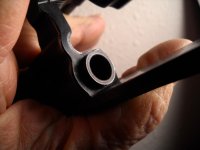wgg
Member
A local shop has a 6" blued 19. They have it marked for $700.00. The blue is in good shape the end of the barrel is shiney from holster wear. The blueing is not worn on the ejector rod. Does'nt appear to have been shot very much. Anything I should look out for.

